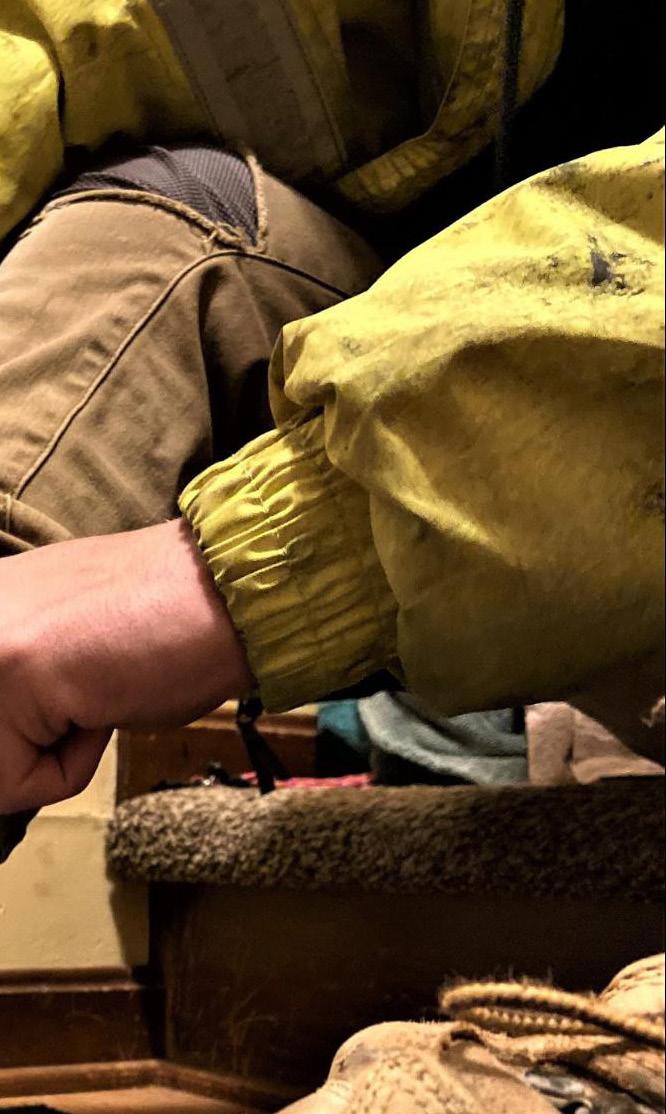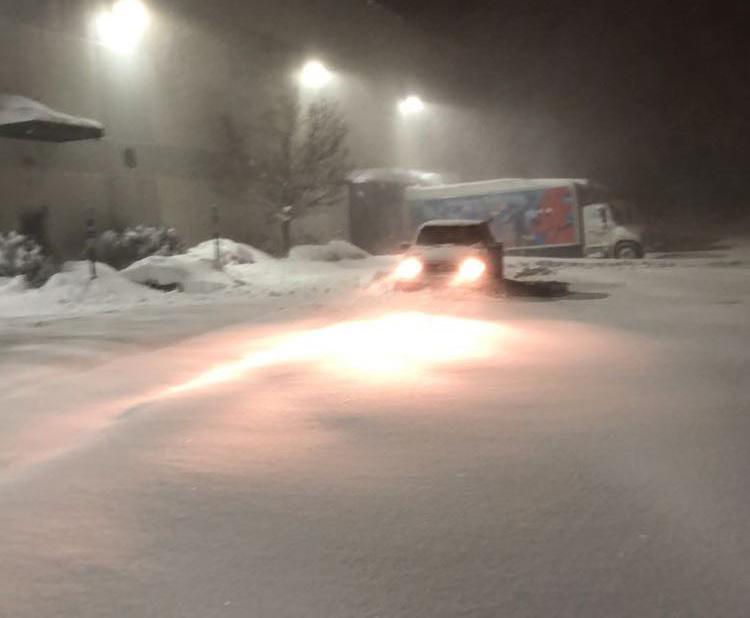
5 minute read
WINTER WORK
As high schoolers, we are taught with the assumption that all of us will attend college. This idea is so pervasive that we often look down upon or ignore the other options for high school graduates. COVID has sparked a national appreciation for essential workers, like docBRAV- tors and EMS. My brother, Justus Saunders, is one of
ING these essential workers, but the work he and others in his trade do often goes unno-
THE ticed. While medical professionals do their best to fight WINTER the virus, people like Justus put themselves through hell to keep the world turning on a more local level.
BY: DYLAN “Snow removal.” The job description sounds easy SAUNDERS enough, or so Justus thought when he was hired to do snow removal at age sixteen.
At age twenty, he admitted he had no idea what he was getting himself into. “My very first year…I was on my own. I had applied and got the job the same day and ended up going out that night. I had no idea what my responsibilities were…I just knew the pay sounded good,” said Justus.
Even after a 12 hour shift, Justus wasn’t finished clearing and salting in Strongsville. Justus would be financially responsible for any injuries caused by the icy sidewalk. Photograph by Justus Saunders. Having worked in concrete and landscape during the summer, Justus felt more than prepared for the snow removal position.
“I’d say it was probably around negative nine to twelve degrees [my first night],” Justus said. “I had a little feed scoop and a five gallon bucket, and I was told to load up 2,000 pounds of salt.” Like any newly-hired teenager, Justus felt the need to prove himself to his employer. He worked a 26-hour shift without proper gloves, boots, and equipment.
“I was shocked because the most that I had ever worked...pouring concrete…was around 12 or 14 hours,” Justus continued. “Snow removal was labor intensive the entire time for 26 hours straight.” Justus was under the impression that snow management would be like shoveling his own driveway on a larger scale. To his surprise, Justus ended up shoveling and salting miles of sidewalks at up to 16 different businesses in the surrounding area. In his four years working as a Justus laces up his worn work boots in preparation for a subcontractor for CUI, snowstorm. Snow removal workers have to be ready anytime Justus has experienced the forecast calls for snow. some extreme work conditions.
“About two years ago, we did three days straight [of work],” said Justus. “[Our customers] have a zero-tolerance policy for snow and ice…as soon as you get to the end of the route, you restart at the beginning. To put this into perspective, we had 15 shovel men quit about 8 hours into their shifts last week.”
Justus explained that even as a teenage subcontractor, he was financially responsible for any snow-related accidents or injuries on the properties he took care of. If someone slipped on ice or a car got stuck, for example, the victim’s compensation would come directly out of Justus’s paycheck.
Snow removal workers need to develop a deep un-

derstanding of their trade and equipment. Workers learn to anticipate weather, calculate the salt they need, predict when snow will melt and refreeze, and keep their machines functioning while on the job. “Sometimes, if you clean the sidewalks fast enough, you’ve just created an ice skating rink,” said Justus. “And that’s a liability.” In Justus’s opinion, the most important skill in his line of work is the ability to drive in the snow. As many new drivers found out this winter, snow driving isn’t easy. People like Justus have to hit the road before city plows have the chance to do their job. “[Snow removal workers] are under all this pressure… you’re racing the storm the whole time… so if you mess up and slide into a ditch or get stuck… because there’s too much snow…you’re costing yourself and the company hundreds of dollars,” said Justus. A subcontractor who gets stuck for two hours can lose anywhere from $120-$200 dollars, which is only a fraction of what the company could lose. If the subcontractor gets into an accident, his insurance rates increase and he could lose his personal vehicle for the
Justus laces up his worn work boots in preparation for a season. Simply put, “There’s snowstorm. Snow removal workers have to be ready anytime a lot of pressure not to mess up,” the forecast calls for snow. said Justus. The combination of harsh labor and company pressure puts a lot of stress on the minds and bodies of snow removal workers. Justus, a longtime BMX rider, motocross rider, snowboarder, and all-around extreme sports enthusiast, is no stranger to injuries. “I’ve broken 17 bones. I have a plate in my collar bone...because I’ve broken that seven times…I’ve had my fair share of injuries,” said Justus. In his experience, snow removal is both physically taxing and dangerous. He’s injured himself “two times lifting bags of salt because…[I’m] one body moving 2,000 pounds of salt per night,” he continued. As for the mental aspect of snow removal, Justus said, “I still get anxious before when I see snow in the Workers carefully navigate snow covered roads and lots to avoid getting stuck. Such incidents cost the workers time and money. Photograph by Justus Saunders.


forecast. You know, that’s something that can speed your heart up and...can keep you up at night.” In Justus’s line of work, one must be able to keep a level head. He compared it to the stress levels of high school students and said that most people entering snow removal aren’t prepared for the mental strain of the job. Snow removers cannot allow accidents or poor conditions to slow them down. “You just have to keep moving forward. That’s the only thing that’s going to keep your head above water,” Justus said.
Given how harsh snow removal is, reasonable people have to wonder what makes the job worth it. For workers like Justus, the answer is pretty simple.
“It’s the money,” Justus said. “You could be making anywhere from $1,000 to $2,500 or $3,000 dollars a week being sixteen years old.” Justus admitted that white collar workers can earn a similar salary without doing anything labor-intensive, but he said that these jobs generally require expensive and time-consuming college education. From Justus’s perspective, “Being sixteen and making $45 dollars an hour shoveling snow seems like a no-brainer.”
Justus went on to say that snow removal isn’t a sustainable career for everyone. Although the money is good, the labor has taken a toll on his physical health. He earned an Associates in Business (without taking out any loans, he added) and plans on going back to school to become a radiation therapist. In the meantime, Justus and workers like him continue to keep the community alive and connected during the winter months.










